K. K. Wong
On Propagation Characteristics of Reconfigurable Surface-Wave Platform: Simulation and Experimental Verification
Apr 27, 2023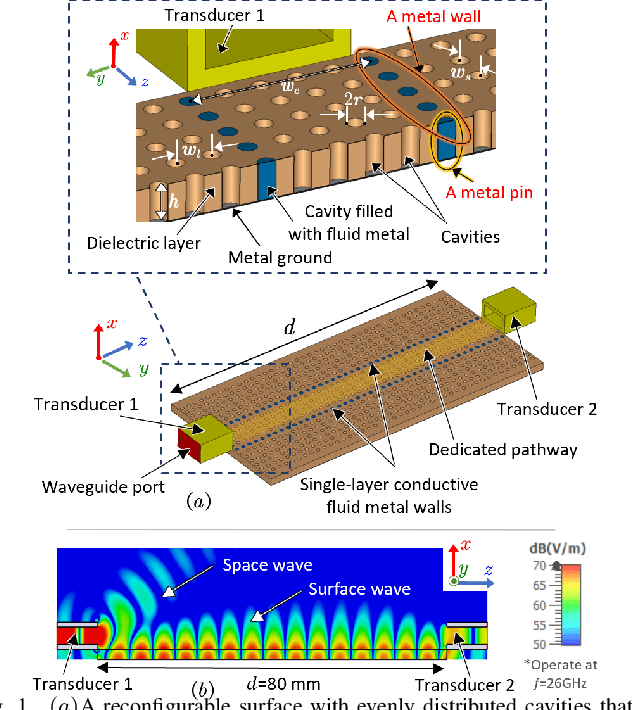
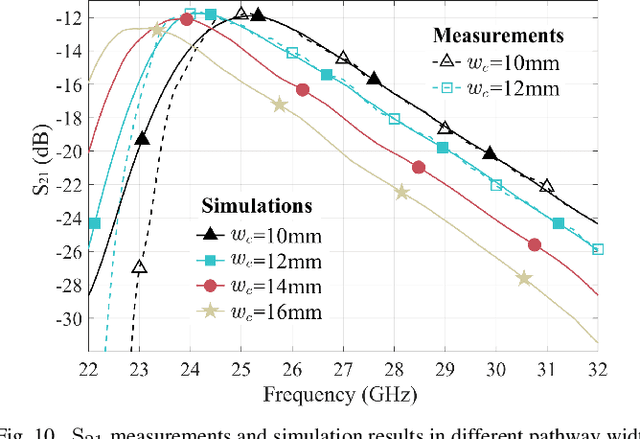
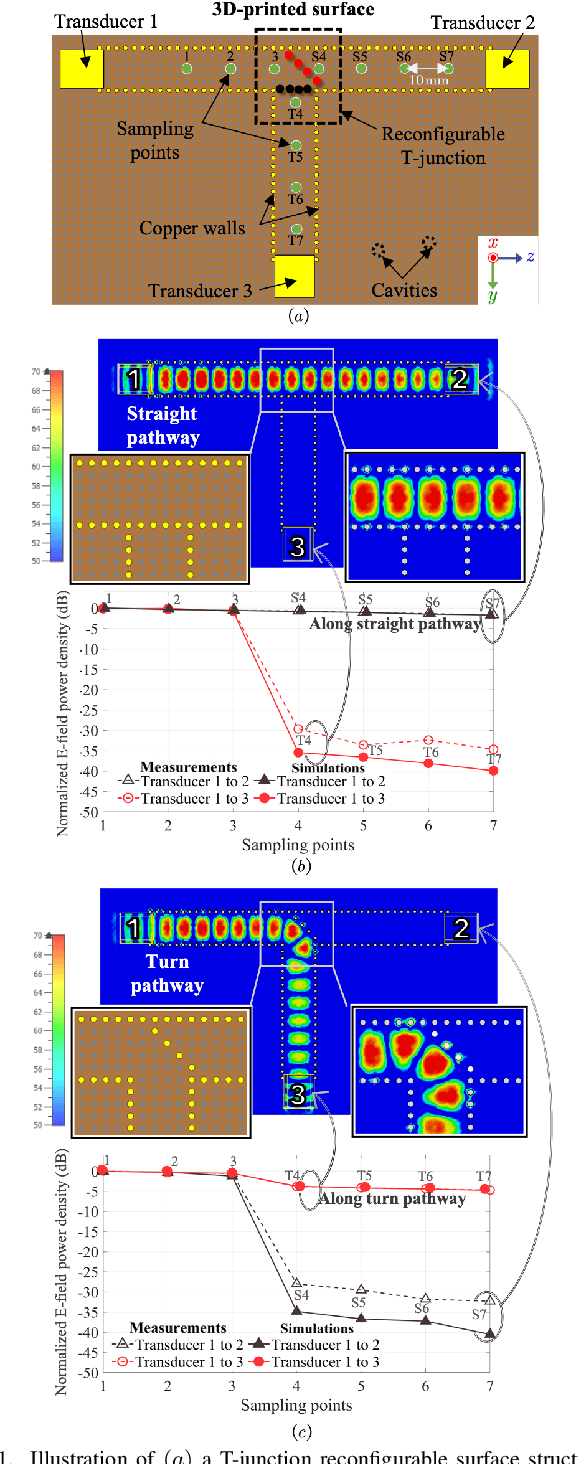

Abstract:Reconfigurable intelligent surface (RIS) as a smart reflector is revolutionizing research for next-generation wireless communications. Complementing this is a concept of using RIS as an efficient propagation medium for potentially superior path loss characteristics. Motivated by a recent porous surface architecture that facilitates reconfigurable pathways with cavities filled with fluid metal, this paper studies the propagation characteristics of different pathway configurations and evaluates the reconfigurable surface-wave platform by using a commercial full electromagnetic simulation software and experiments. This paper also looks into the best scheme to switch between a straight pathway and a $90^\circ$-turned pathway and attempts to quantify the additional path loss when making a turned pathway. Our experimental results verify the simulation results, showing the effectiveness of the proposed reconfigurable surface-wave platform for a wide-band, low path loss and highly controllable communication.
On Surface Wave Propagation Characteristics of Porosity-Based Reconfigurable Surface
Jun 22, 2022



Abstract:Reconfigurable surfaces facilitating energy-efficient, intelligent surface wave propagation have recently emerged as a technology that finds applications in many-core systems and 6G wireless communications. In this paper, we consider the porosity-based reconfigurable surface where there are cavities that can be filled on-demand with fluid metal such as Galinstan, in order to create adaptable channels for efficient wave propagation. We aim to investigate the propagation phenomenon of signal fluctuation resulting from the diffraction of discrete porosity and study how different porosity patterns affect this phenomenon. Our results cover the frequency range between 21.7GHz and 31.6GHz when a WR-34 waveguide is used as the transducer.
Enhancing and Localizing Surface Wave Propagation with Reconfigurable Surfaces
Jun 19, 2021



Abstract:As an attempt to develop a reconfigurable surface architecture that can use liquid metal such as Galinstan to shape surface channels on demand, this paper considers a punctured surface where cavities are evenly distributed and can be filled with liquid metal potentially via digitally controlled pumps. In this paper, we look at the benefits of such architecture in terms of surface-wave signal enhancement and isolation, and examine how various system parameters impact the performance using full wave 3-dimensional electromagnetic simulations. It is shown that extraordinary signal shaping can be obtained.
Reconfigurable Surface Wave Platform Using Fluidic Conductive Structures
May 22, 2021
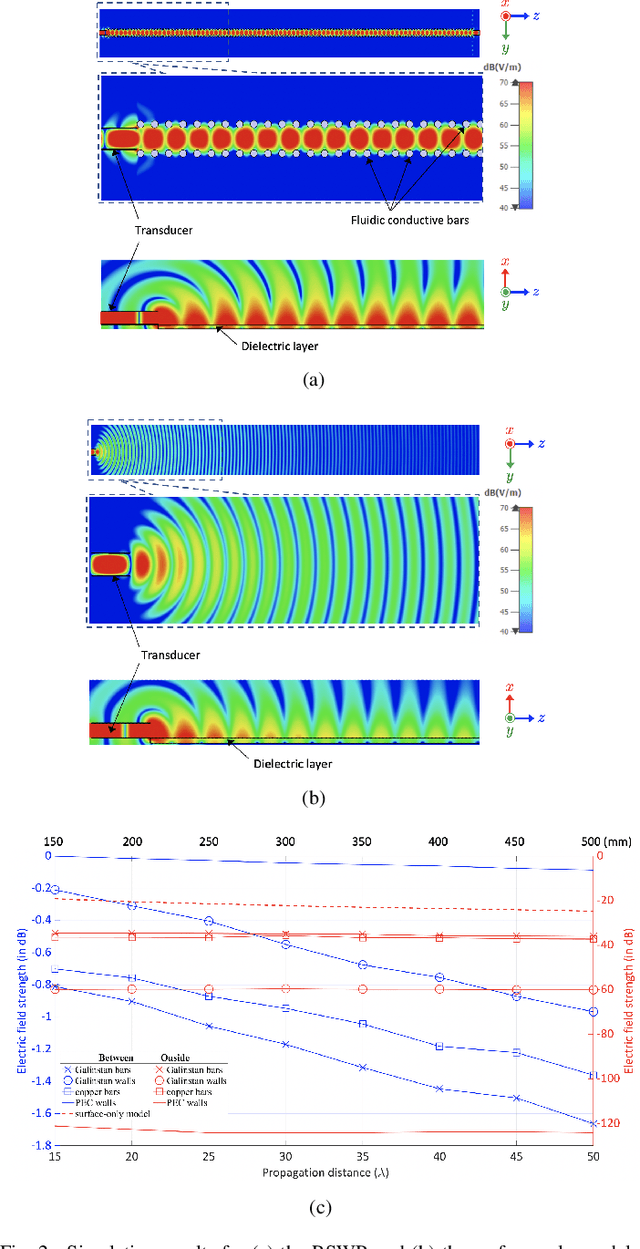
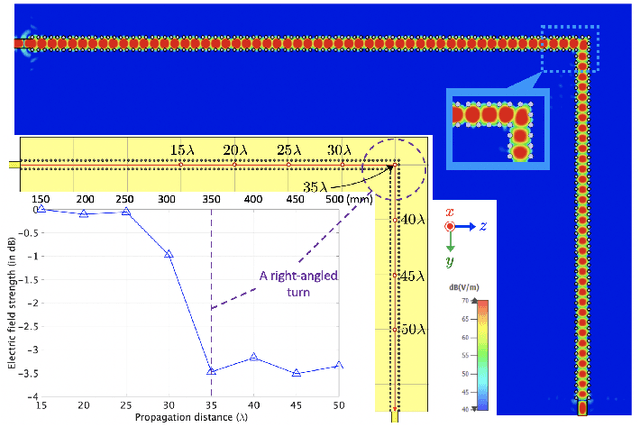
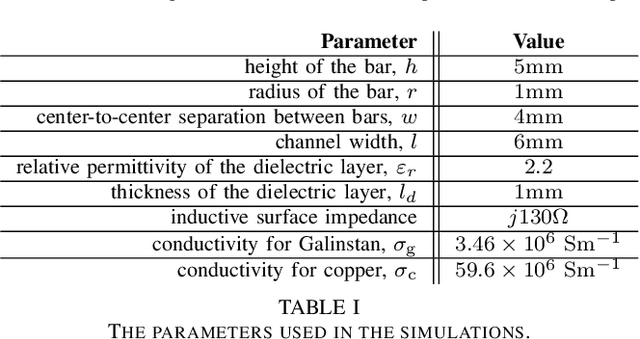
Abstract:Surface wave inherently has less propagation loss as it adheres to the surface and minimizes unwanted dissipation in space. Recently, they find applications in network-on-chip (NoC) communications and intelligent surface aided mobile networked communications. This paper puts forward a reconfigurable surface wave platform (RSWP) that utilizes liquid metal to produce highly energy-efficient and adaptive pathways for surface wave transmission. Our simulation results illustrate that the proposed RSWP using Galinstan can obtain a $25{\rm dB}$ gain in the electric field for a propagation distance of $35\lambda$ at $30{\rm GHz}$ where $\lambda$ denotes the wavelength. Moreover, less than $1{\rm dB}$ loss is observed even at a distance of $50\lambda$, and a pathway with right-angled turns can also be created with only a $3.5{\rm dB}$ loss at the turn.
 Add to Chrome
Add to Chrome Add to Firefox
Add to Firefox Add to Edge
Add to Edge